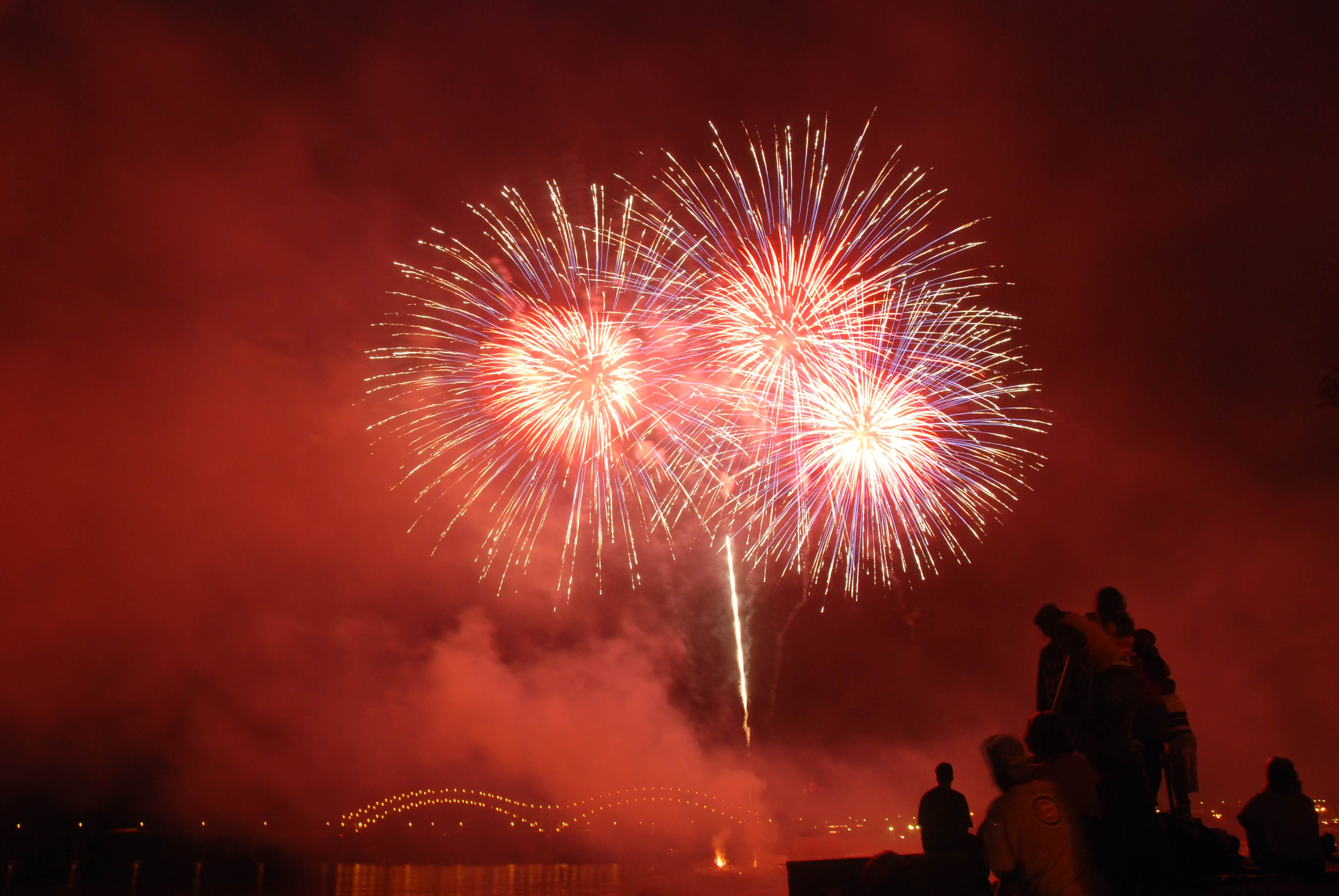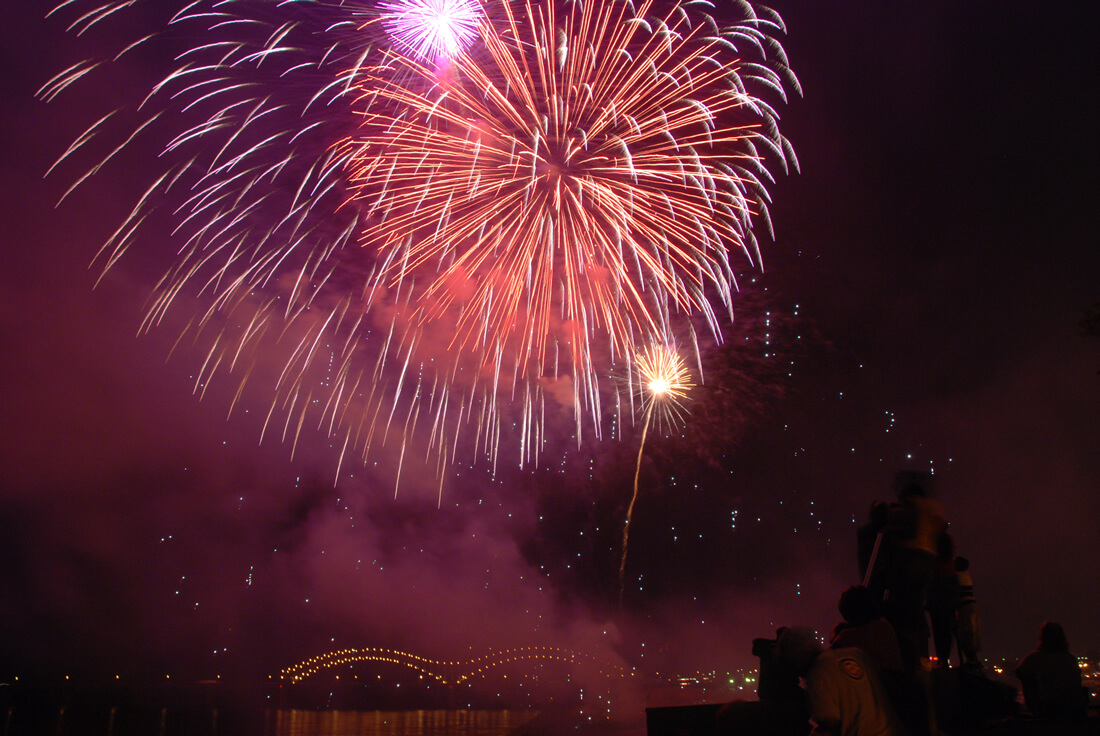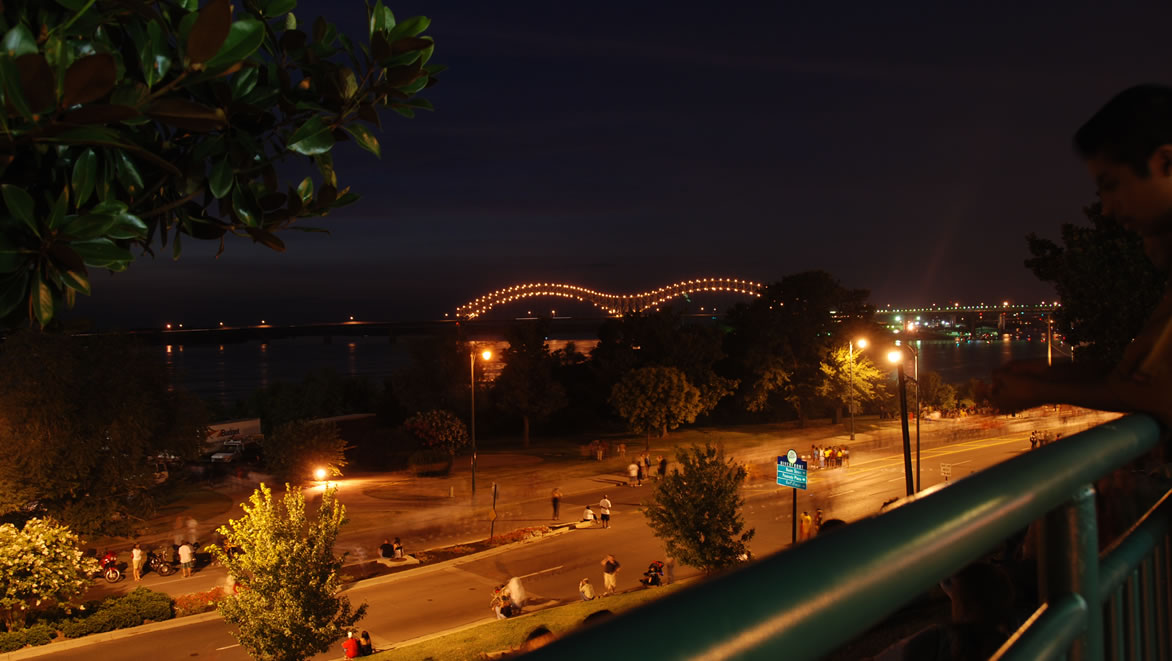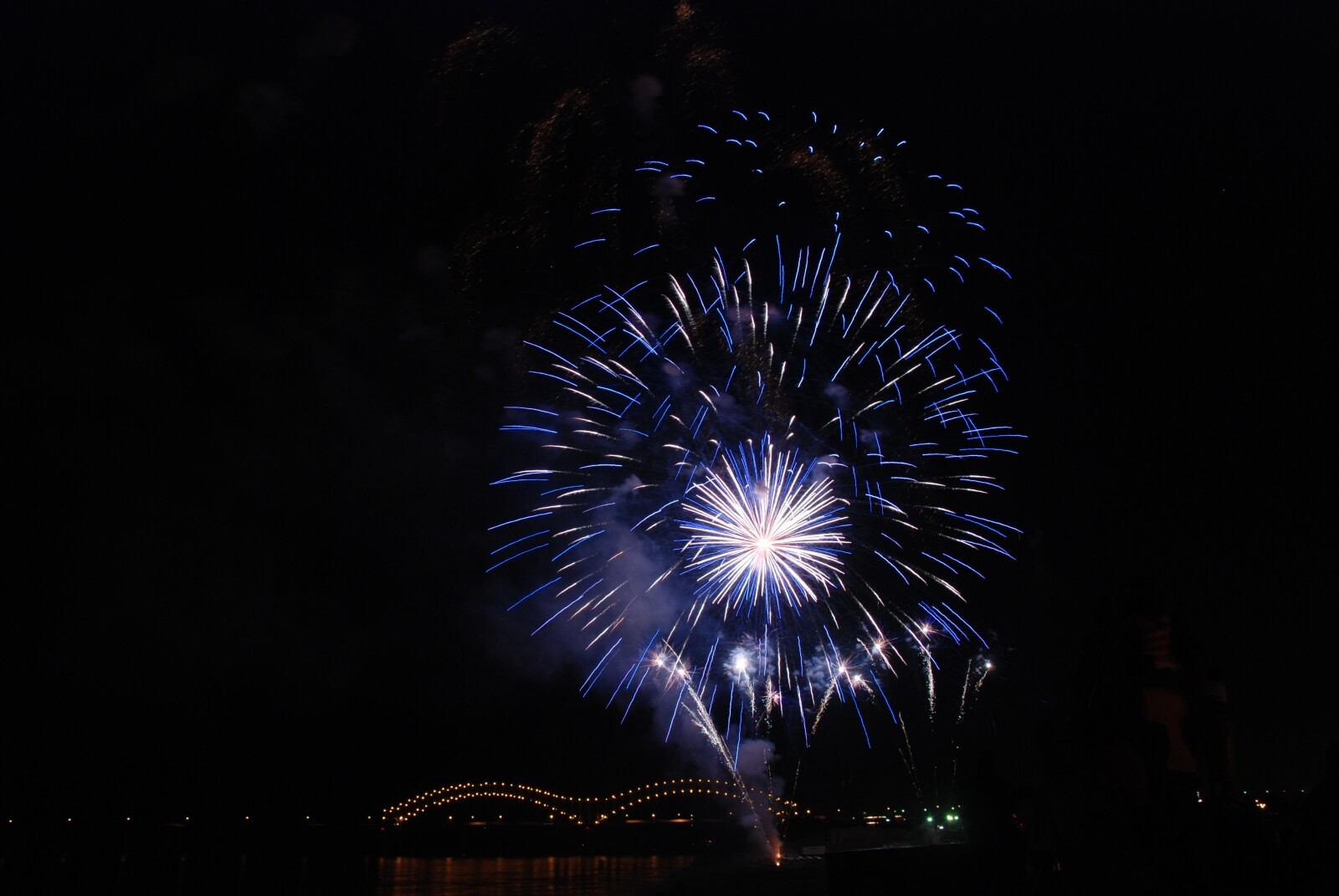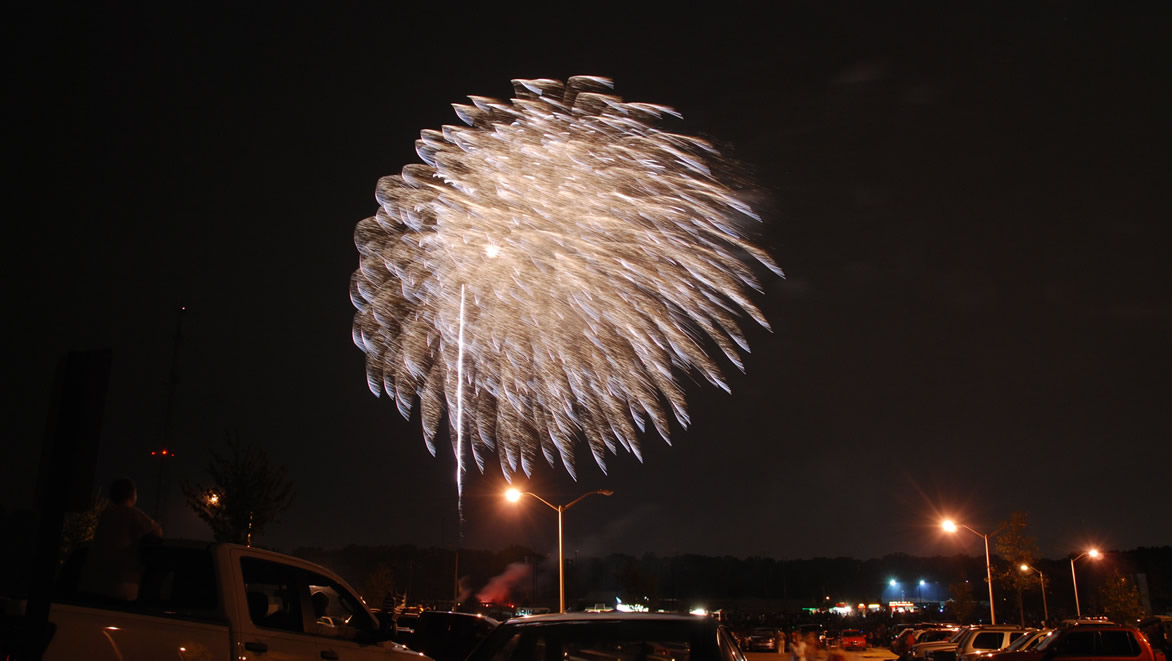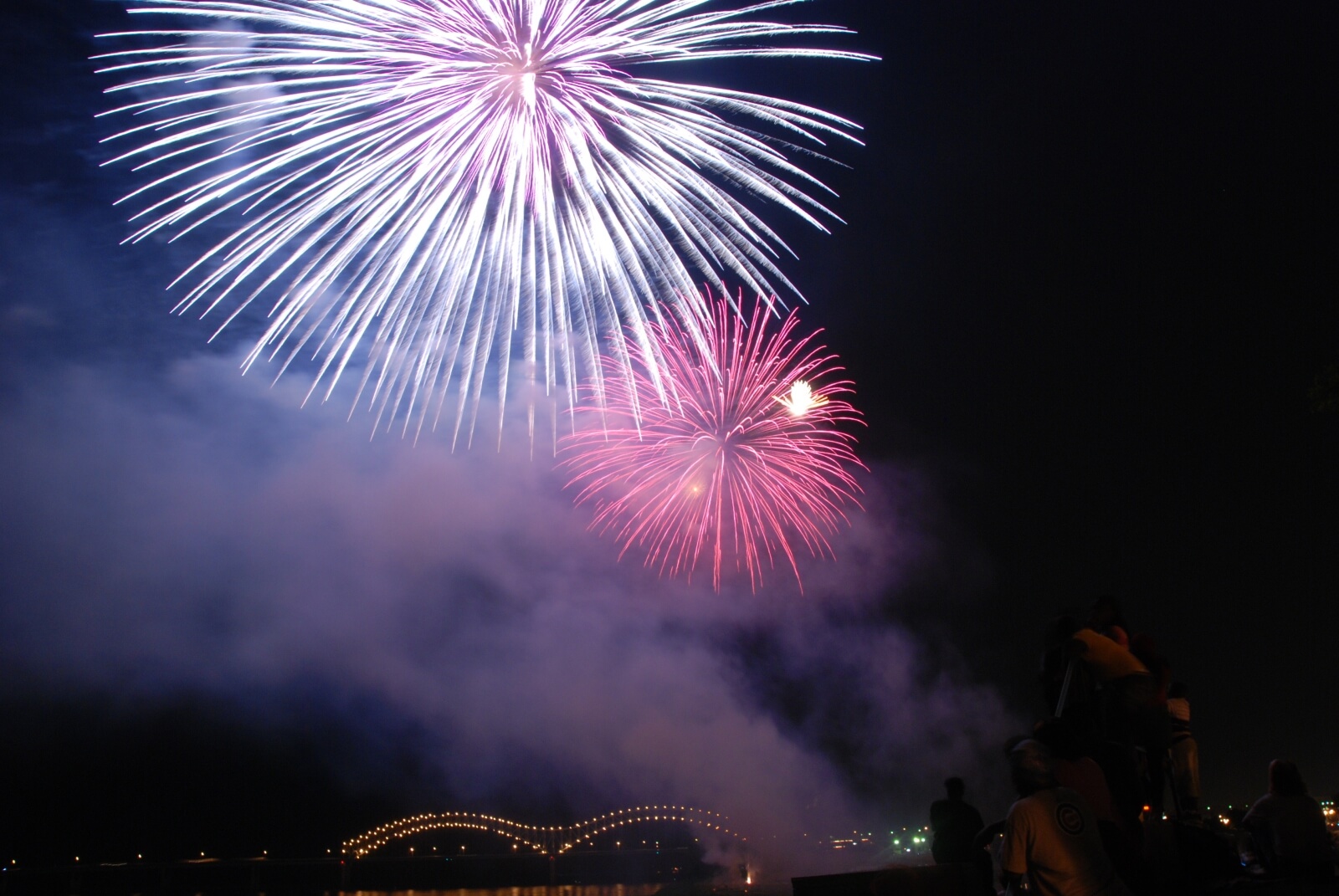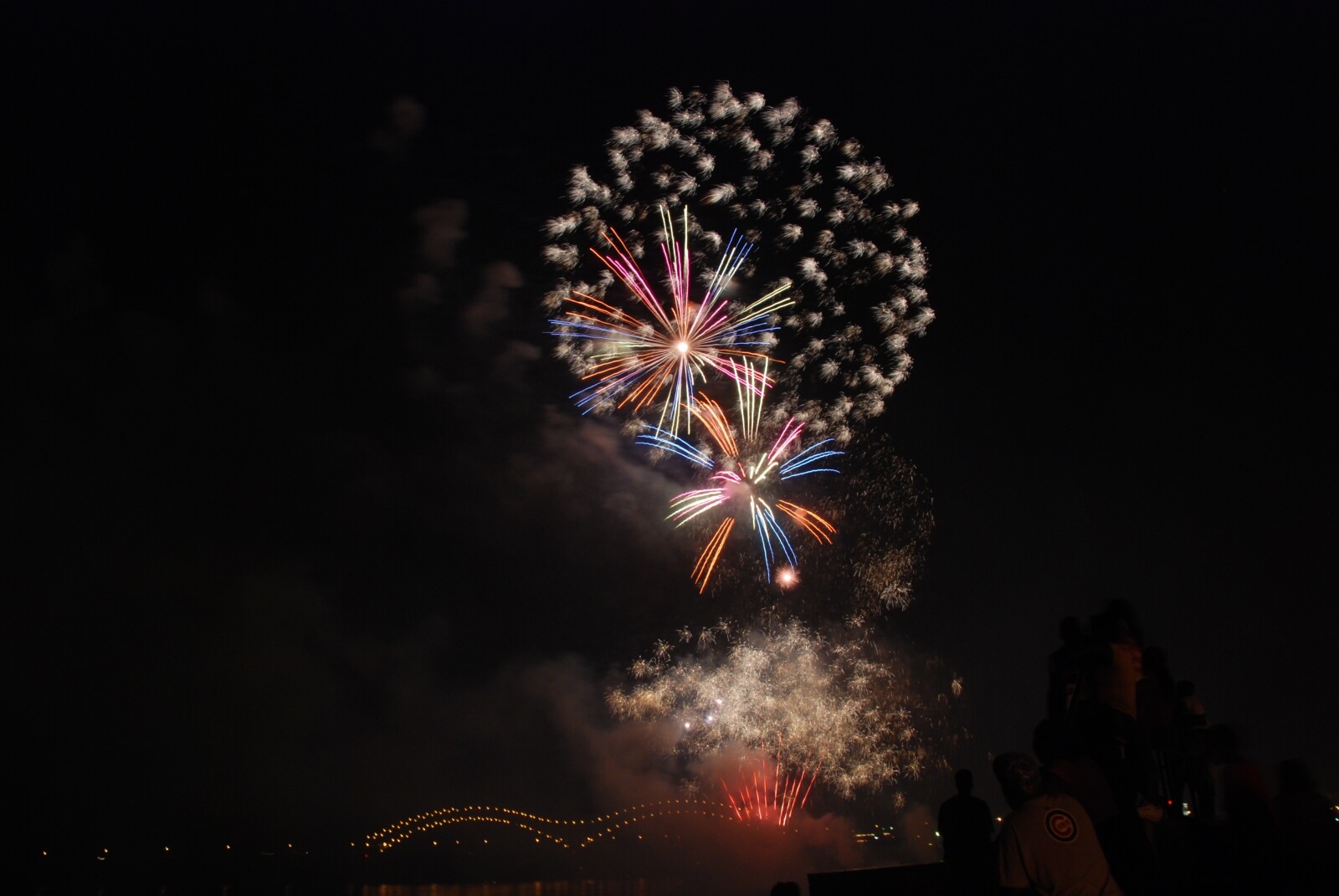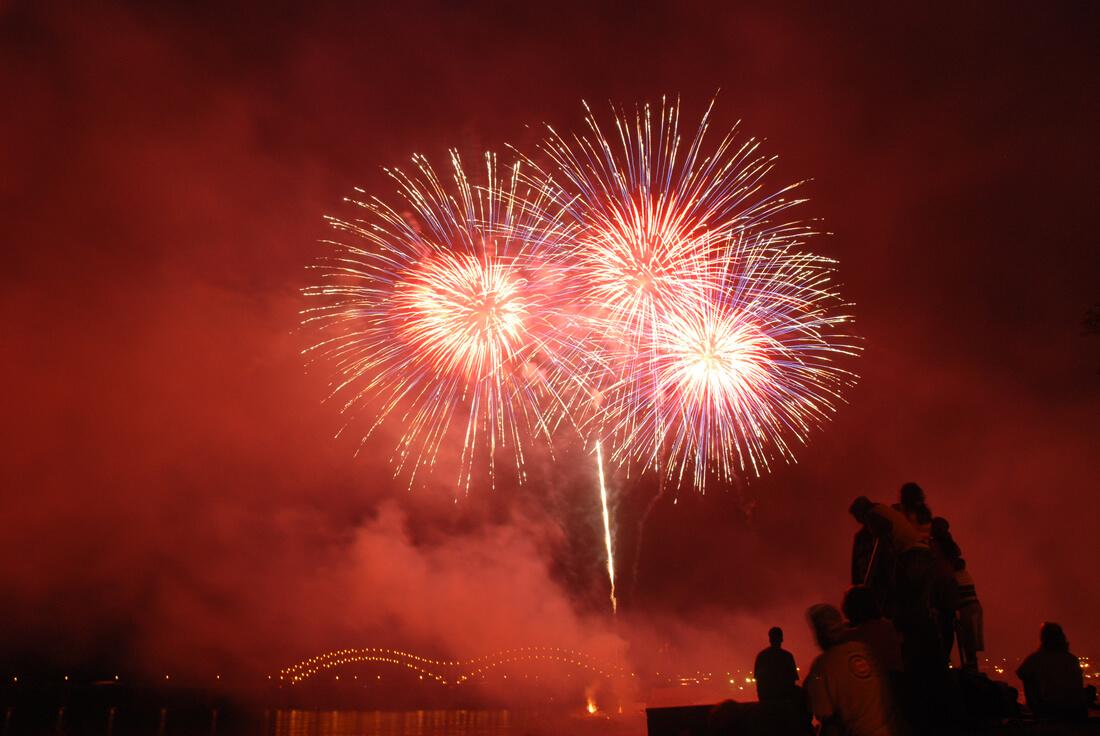Soaking in a professional fireworks display is a Fourth of July tradition in many parts of the United States. Between the barbecues and good times spent with friends and family, you'll no doubt be bombarded with images of fireworks over the coming days. And while those Instagram and Twitter users certainly mean well, the truth of the matter is that most of those photos will suck.
The good news is, you don't have to be a professional photographer to snap amazing pictures of fireworks. All you need is some basic equipment and a little know-how, the latter of which we'll be offering up here today.
Preparation
First things first, check the weather. If it's going to be rainy outside, the show will likely be cancelled or postponed at the very least. Precipitation is only part of the concern, as you'll also want to know how windy it will be. Gusty conditions can often be your worst enemy when trying to photograph a pyrotechnics display.
Assuming the weather checks out, the next thing you'll want to do is come up with a suitable location to set up shop ahead of time. This is easier if you're familiar with the area, know exactly where the fireworks will be launched from or ideally, have attended a show at the selected location in the past. If you're new to the area or the venue and you're really after some quality shots, it may not be a bad idea to scout out the location beforehand.
I typically try to stay back from the action a bit as being too close means you'll have to position your camera facing more upwards towards the sky. A standard kit lens can get the job done, but if you have access to a wide angle lens, that may be your first choice.
The Basics
While a DSLR is the obvious choice for capturing stunning images, it isn't the only option to choose from. Mirrorless cameras from the likes of Olympus, Panasonic and Sony will also make an excellent choice although you can get by with a point-and-shoot or even a smartphone if it's all you have. Ideally, you'll want to use manual controls for best results but regardless of which camera you use, you're going to need a tripod.
Eliminating camera shake is a must if you want usable results and the only way to do that is with a tripod. Additionally, you'll want to capture images without touching the camera (again, even the slightest bit of vibration can ruin a shot). I've had great results with wireless shutter releases although wired options can get the job done as well.
If neither of these are an option, you can try to use the self-timer on your camera. This is difficult, however, as predicting exactly when a shell will explote in mid-air can be tricky at best. If you have a super stable tripod, gently pressing the shutter button may work as well but I'd only recommend it as a last resort.
Don't overlook the simple stuff during preparation. Be sure to charge your camera battery fully, bring extras if you have them, and clear your memory card. If all goes according to plan, you'll be shooting non-stop during the display and if the events in your area are anything like the ones I've witnessed, they can last upwards of half an hour.
Setting Up Your Camera
As before, using your camera's manual mode is optimal when shooting fireworks. Some cameras offer presets for capturing fireworks but you'll get the best results if you're in total control of the action.
There are four key elements to adjust in manual mode: aperture, shutter speed, ISO, and focus mode.
Aperture For the purpose of shooting fireworks, you'll want to set your aperture somewhere between f/8 and f/11. This will produce a longer depth of field and allow the fireworks to all be in focus at the same time.
Shutter Speed There's really no right or wrong option so long as you're over one full second. I've experimented with shutter speeds of up to eight seconds but my best shots have usually come in at 1-2 second speeds. Feel free to adjust the shutter speed during the show and check your results as you go to see what works best for you.
ISO This adjusts how sensitive your camera is to light. It's useful in low-light situations to reduce the amount of time the shutter needs to be open but since we're after a long shutter anyway, it's best to keep the ISO value as low as possible. Doing so will also help reduce image noise, an undesired side effect of long exposures and high ISO values.
Focus Mode If your camera has a manual focus mode, this will be the best choice during the majority of the fireworks show. I usually start in auto-focus and let the camera lock focus when the first pyrotechnics go up then switch to manual. This method ensures all of the images will be in focus and you don't have to worry with the auto-focus system attempting to hunt for focus when there isn't much light.
Further Considerations
It goes without saying, if you're already investing this much time into capturing the show you should be shooting at the highest image quality possible. You might as well get the most out of your camera and if you brought along extra memory cards, large file sizes won't be a concern.
Some cameras offer a feature called long exposure noise reduction. As the name suggests, this feature will attempt to reduce noise caused by long shutter times - and it's typically pretty good at it. The only problem is that it requires twice as much time to capture a single image when enabled. So make sure this is disabled or you'll miss half the show while your camera is snapping a picture with the shutter closed. Also disable the flash on your camera. It'll serve absolutely no purpose when shooting aerial fireworks
A Few More Tips
Capturing fireworks against a black sky certainly works but if you have the option of a cityscape to work with, try to incorporate that into some of your shots. At least try to include some other spectators in the frame to give your images a bit more depth and perspective.
As mentioned earlier, wind can wreak havoc on your shots. If you get a perfectly calm evening for shooting, congratulations. For most of us, however, there will at least be a bit of a breeze flowing. In that case, you'll want to avoid being downstream of it. After the first few mortar shells explode, the resulting smoke will inevitably drift your way and ruin the rest of your shots.
Above all else, your success will depend on timing and predicting explosions overhead. Snap non-stop during the entire show, only stopping to adjust settings or change equipment. You'll no doubt get many throwaway shots but if you've followed everything in this guide and Mother Nature cooperates, you'll leave with some stunning photos and the envy of your friends and family.
